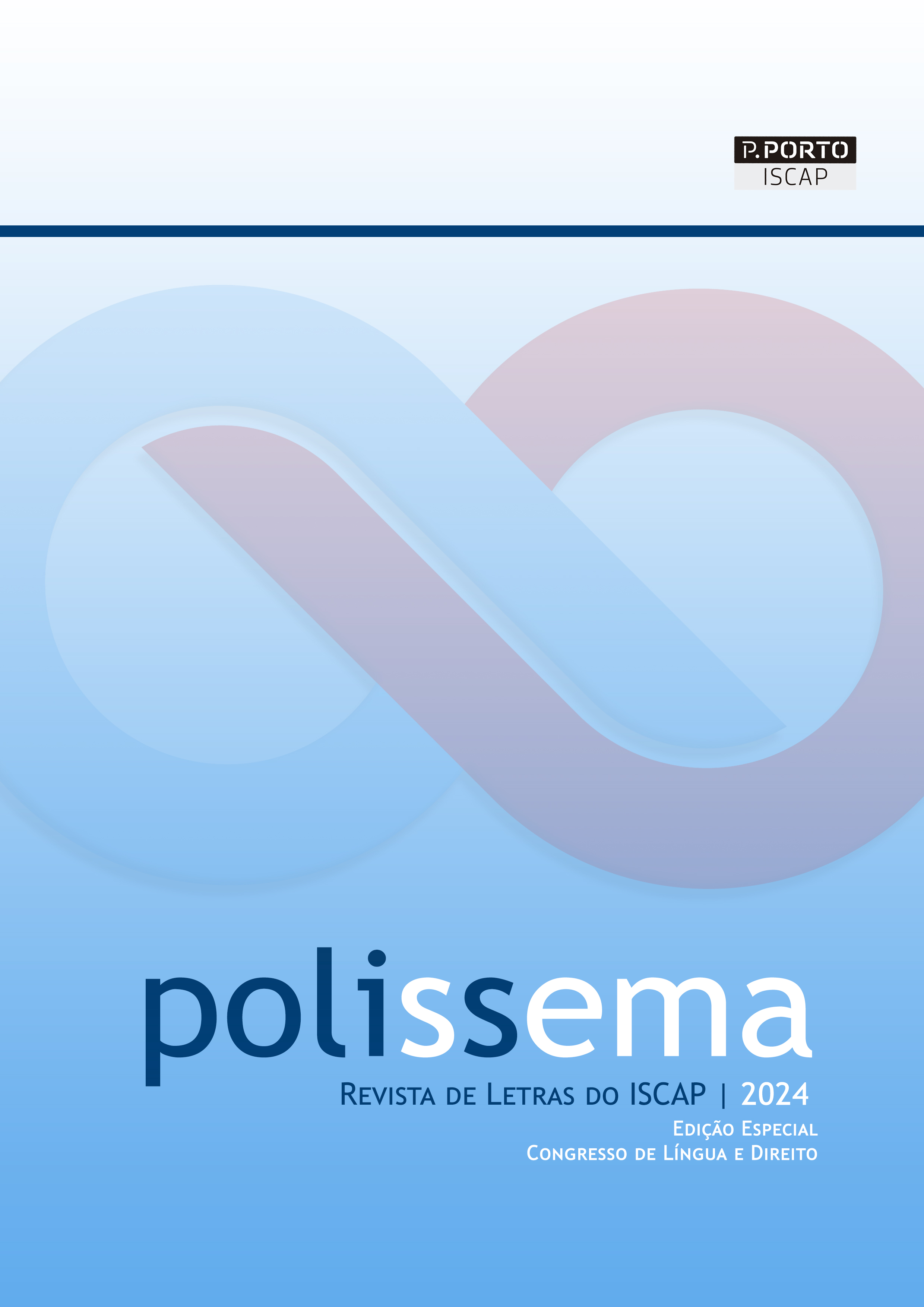PATTERNS OF HUMAN-MACHINE INTERACTION IN LEGAL AND INSTITUTIONAL TRANSLATION: FROM HYPE TO FACT
DOI :
https://doi.org/10.34630/polissema.vi.5750Résumé
After several years of intense technological adaptations in the translation industry, there is a need to take stock of their implications, especially as regards the integration of machine translation (MT) in work processes. This study presents the results of a large-scale survey on the use of machine-generated inputs, particularly through translation memories (TMs) and MT systems, in multiple international organizations. It first focuses on the relevance of legal translation in international institutional settings before comparing patterns of use of computer tools for the translation of legal documents as opposed to other texts in these settings, and how such patterns vary across organizations or depending on translators’ profiles. The findings reveal a landscape of widespread “augmented translation”, but with the prevalent use of TMs as suitable tools for verifying the relevance and reliability of the sources of previous translations, while post-editing MT suggestions are integrated approximately two thirds of the time, or slightly less frequently in the case of legal translation. This points to a more cautious approach to human-machine interaction for the translation of legal texts, which is also reflected in several variations between institutions. From-scratch translation is limited to a minority of cases, while the scores per profile groups based on domain-specific backgrounds and experience levels were strikingly similar across institutions. The factual overview provided serves to debunk some of the myths that have fuelled the hype about MT in recent years.
Références
Arnejšek, M. & Unk, A. (2020). Multidimensional assessment of the eTranslation output for English–Slovene. In A. Martins et al. (Eds.), Proceedings of the 22nd Annual Conference of the European Association for Machine Translation (pp. 383–392). European Association for Machine Translation.
Directorate-General for Translation, European Commission (2015). DGT Translation Quality Guidelines. European Commission.
Hanzl, J. & Beaven, J. (2017). Quality assurance at the Council of the EU’s Translation Service. In T. Svoboda, Ł. Biel & K. Łoboda (Eds.), Quality Aspects in Institutional Translation (pp. 139–153). Language Science Press. https://doi.org/10.5281/zenodo.1048196.
Killman, J. (2024). Machine Translation in the Legal Context: A Spanish-to-English Comparative Product Study of Statistical vs. Neural MT Output. In M. Winters, S. Deane-Cox, & U. Böser (Eds.), Translation, Interpreting and Technological Change: Innovations in Research, Practice and Training (pp. 136–156). Bloomsbury.
Lommel, A. (2017). How AI Will Augment Human Translation. Common Sense Advisory.
Lommel, A. (2018). Augmented translation: A new approach to combining human and machine capabilities. In C. Cherry & G. Neubig (Eds.), Proceedings of the 13th Conference of the Association for Machine Translation in the Americas (Volume 2: User Track) (pp. 5–12). Association for Machine Translation in the Americas.
Nunes Vieira, L., O’Hagan, M. & O’Sullivan, C. (2021). Understanding the societal impacts of machine translation: a critical review of the literature on medical and legal use cases. Information, Communication & Society, 24(11), 1515–1532. https://doi.org/10.1080/1369118X.2020.1776370.
Pasteur, O. (2013). Technology at the Service of Specialized Translators at International Organizations. In A. Borja Albi & F. Prieto Ramos (Eds.), Legal Translation in Context: Professional Issues and Prospects (pp. 283–297). Peter Lang.
Prieto Ramos, F. (2020a). Translation at International Organizations: The Legal and Linguistic Hierarchies of Multilingualism. In M. Ji & S. Laviosa (Eds.), The Oxford Handbook of Translation and Social Practices (pp. 455–477). Oxford University Press. https://doi.org/10.1093/oxfordhb/9780190067205.013.13.
Prieto Ramos, F. (2020b). The Use of Resources for Legal Terminological Decision-Making: Patterns and Profile Variations Among Institutional Translators. Perspectives, 29(2), 278–310. https://doi.org/10.1080/0907676X.2020.1803376.
Prieto Ramos, F. & Guzmán, D. (2021). Examining institutional translation through a legal lens: A comparative analysis of multilingual text production at international organizations. Target, 33(2), 258–281. https://doi.org/10.1075/target.21003.pri.
Quinci, C. & Pontrandolfo, G. (2023). Testing neural machine translation against different levels of specialisation: An exploratory investigation across legal genres and languages. Trans-kom, 16(1), 174–209.
Roiss, S. (2021). Y las máquinas rompieron a traducir… Consideraciones didácticas en relación con la traducción automática de referencias culturales en el ámbito jurídico. Trans. Revista de Traductología, 25, 491–505. https://doi.org/10.24310/TRANS.2021.v1i25.11978.
Sánchez-Gijón, P. & Kenny, D. (2022). Selecting and Preparing Texts for Machine Translation: Pre-Editing and Writing for a Global Audience. In D. Kenny (Ed.), Machine Translation for Everyone: Empowering Users in the Age of Artificial Intelligence (81–103). Language Science Press. https://doi.org/10.5281/zenodo.6759980.
Stefaniak, K. (2020). Evaluating the usefulness of neural machine translation for the Polish translators in the European Commission. In A. Martins et al. (Eds.), Proceedings of the 22nd Annual Conference of the European Association for Machine Translation (pp. 263–269). European Association for Machine Translation.
Stefaniak, K. (2023). Machine Translation and Terminology: The Experience of the European Commission. In S. Castilho, R. Caro Quintana, M. Stasimioti & V. Sosoni (Eds.), Proceedings of the New Trends in Translation and Technology Conference - NeTTT 2022 (pp. 134–141). INCOMA Ltd. Shoumen.
Strandvik, I. (2020). Digital transformation and institutional translation – change and challenges. In J.-M. Della-Zuanna & C. Kurz (Eds.), Translation Quality in the Era of Digitalization (pp. 466–494). Elanders GmbH.
Tomić, A. & Beltrán Montoliu, A. (2013). Translation at the International Criminal Court. In A. Borja Albi & F. Prieto Ramos (Eds.), Legal Translation in Context: Professional Issues and Prospects (pp. 221–242). Peter Lang.
van der Meer, J. & Joscelyne, A. (2017). Nunc est Tempus: Redesign your Translation Business, Now! TAUS BV.
Vigier Moreno, F. J. & Pérez Macías, L. (2022). Assessing neural machine translation of court documents: A case study on the translation of a Spanish remand order into English. Revista de Llengua i Dret / Journal of Language and Law, 78, 73–91. https://doi.org/10.2436/rld.i78.2022.3691.
Wiesmann, E. (2019). Machine translation in the field of law: A study of the translation of Italian legal texts into German. Comparative Legilinguistics, 37, 117–153. https://doi.org/10.14746/cl.2019.37.4.
Téléchargements
Publiée
Comment citer
Numéro
Rubrique
Licence
© POLISSEMA 2024

Ce travail est disponible sous licence Creative Commons Attribution - Pas d'Utilisation Commerciale - Pas de Modification 4.0 International.


